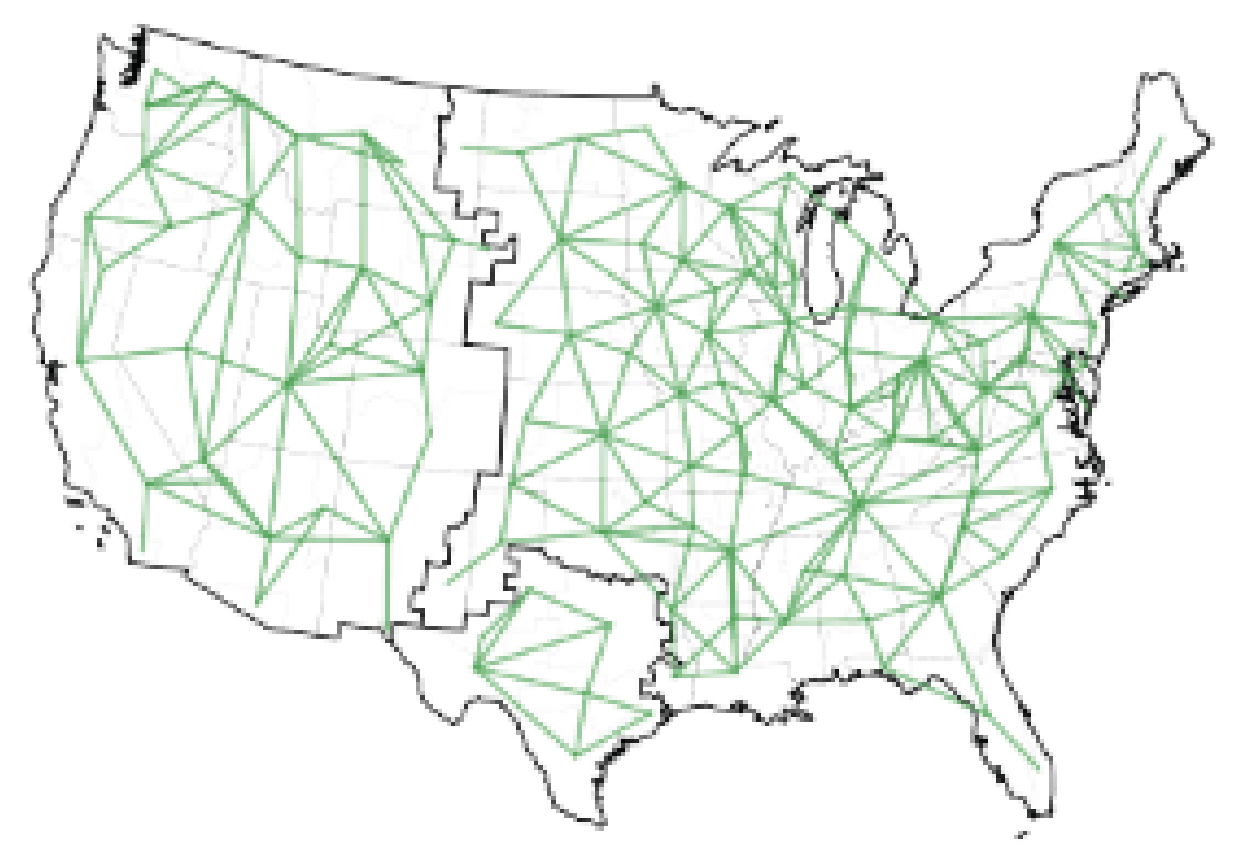Tuesday, 30/12/2025 | 15:21 GMT+7
The U.S. Department of Energy has released its National Tranmission Planning Study.
The study considers four transmission frameworks and highlights the increasing levels of savings across the frameworks under a high-renewables grid.
DOE analyzed the four frameworks to compare how the optimal electricity system—including generation, storage, and transmission—might evolve with different constraints and opportunities for transmission.
DOE first considered a “Limited” transmission framework, effectively “business as usual,” that allowed transmission expansion not exceeding the recent annual maximum amount, and no transmission across the multiple grid regions shown in the nearby image.

DOE then compared that baseline to three accelerated transmission frameworks.
The “Alternating Current” framework allowed transmission extending within each of the Eastern, Western and Texas interconnections.

The “Point-to-Point” framework allowed transmission nationwide, without boundaries, plus long-distance point-to-point HVDC transmission.

The “Multiterminal” framework includes HVDC with advanced multiterminal converters, and appears similar to a proposed "macrogrid" framework proposed by grid modeling firm Vibrant Clean Energy in 2022. VCE’s framework evaluated underground HVDC, plus underwater HVDC along the East, West and Gulf coasts largely to transmit offshore wind power. DOE did not include offshore HVDC.

As shown in the image from DOE’s report at the top of this story, when evaluating 90% emissions reductions for the nation’s grid by 2035, transmission capacity by 2050 could increase from 205 terawatt-miles under the Limited framework to as much as 512 terawatt-miles under the Multiterminal framework.
The same image shows that net savings through 2050 could reach as high as $490 billion under the Multiterminal framework, compared to the Limited framework. DOE said that “approximately $1.60 to $1.80 is saved for every dollar spent on transmission.”
Putting those savings in context, DOE said that the Limited framework would have total system costs of $6.37 trillion by 2050, so that the savings from added transmission would range from 4% to 8% of total system costs.
In a separate but similarly-named National Transmission Needs Study, DOE found last year that the U.S. will need to add 54.5 TW-miles of within-region transmission by 2035 under future scenarios with moderate load but high clean energy assumptions. The regions referenced in that study are those shown for the Limited framework above.
DOE’s transmission planning study also projects the optimal capacity of utility-scale solar and land-based wind in each state by 2035 for each of the four frameworks, under the study’s central assumptions of mid-demand growth and 90% emissions reductions by 2035.
In some states the optimal capacity of utility-scale solar is higher in the frameworks with HVDC than under the Alternating Current framework. But in other states the utility-scale solar capacity is higher in the Alternating Current framework, apparently because for those states HVDC transmission would allow for more imported solar power and less in-state solar power.
DOE previously shared preliminary results from the national transmission planning study suggesting that to cost-effectively reach a high level of renewable generation, additional transmission will be needed to connect the wind belt in the central U.S. to eastern grids.
VCE projected in its least-cost macrogrid scenario that installed solar capacity would exceed 830 GW by 2050 and wind capacity would exceed 1130 GW, with onshore wind predominating.
DOE found a higher level of estimated net savings under high demand growth scenarios, ranging from $710-970 billion through 2050, and said that “coupling high demand with more rapid decarbonization can yield more than $1 trillion in savings.”
According to pv-magazine-usa.com








 Webinar 2: “Financial Support for Energy Efficiency Enterprises – Opportunities and Challenges”
Webinar 2: “Financial Support for Energy Efficiency Enterprises – Opportunities and Challenges”
 Vietnamese enterprises achieve green growth and cut costs through energy efficiency
Vietnamese enterprises achieve green growth and cut costs through energy efficiency
 Capacity Building for Program Implementing Entity
Capacity Building for Program Implementing Entity
 Enhance Energy Efficiency Knowledge for Managers of Cement Industrial Enterprises
Enhance Energy Efficiency Knowledge for Managers of Cement Industrial Enterprises
 Capacity building for participating financial institutions in Ho Chi Minh City
Capacity building for participating financial institutions in Ho Chi Minh City
 Strengthening capacity for energy management officers of local government agencies
Strengthening capacity for energy management officers of local government agencies
 Strengthening Sales and Marketing Capacity for Energy Efficiency Equipment and Solution Suppliers
Strengthening Sales and Marketing Capacity for Energy Efficiency Equipment and Solution Suppliers